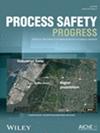基于复杂网络的建筑施工事故属性交互效应
IF 1
4区 工程技术
Q4 ENGINEERING, CHEMICAL
引用次数: 0
摘要
本文旨在通过深入研究建筑施工事故关键原因与事故属性之间的相关性,有效地利用建筑施工事故相关数据。首先,作者收集了1134份事故调查报告,采用“5W1H”分析方法提取了6类事故属性:时间、地点、原因类别、活动、建筑类型、事故类型。随后,采用词云图识别主要直接原因,并分析四类原因之间的相关特征。最后,利用Gephi软件构建了建筑施工事故属性的异构关联网络。引入拓扑参数分析6个事故属性之间的关系。结果表明,复杂网络可以有效地分析各种建筑事故属性之间的相互作用,从而揭示各种事故属性之间的关联规律和事故特征。关键节点集合表示为{F1, F2, B2, B17, F3, B4, B16, B5, F4, B15, D20}。确定了13组高度相关的事故属性,突出了协作事故预防策略的必要性。这些发现有可能直观地呈现事故知识,为建筑施工事故的分析提供创新的见解。本文章由计算机程序翻译,如有差异,请以英文原文为准。
Interaction effect of building construction accident attributes based on complex network
This paper aims to effectively utilize data related to building construction accidents by delving deeply into the correlations between key causes and accident attributes. Firstly, the authors gathered 1134 accident investigation reports and employed the “5W1H” analysis method to extract six types of accident attributes: time, location, cause category, activity, building type, and accident type. Subsequently, a word cloud map was employed to identify the primary direct causes, and the correlation characteristics among the four cause categories were analyzed. Finally, a heterogeneous correlation network of building construction accident attributes was constructed using Gephi software. Topological parameters were introduced to analyze the relationships among the six accident attributes. The results indicate that a complex network can effectively analyze the interplay among various construction accident attributes, thus revealing the correlation laws and accident characteristics between various accident attributes. The set of key nodes is represented as {F1, F2, B2, B17, F3, B4, B16, B5, F4, B15, D20}. Thirteen highly correlated sets of accident attributes were identified, highlighting the need for collaborative accident prevention strategies. These findings have the potential to visually present accident knowledge, offering innovative insights for the analysis of building construction accidents.
求助全文
通过发布文献求助,成功后即可免费获取论文全文。
去求助
来源期刊

Process Safety Progress
工程技术-工程:化工
CiteScore
2.20
自引率
10.00%
发文量
99
审稿时长
6-12 weeks
期刊介绍:
Process Safety Progress covers process safety for engineering professionals. It addresses such topics as incident investigations/case histories, hazardous chemicals management, hazardous leaks prevention, risk assessment, process hazards evaluation, industrial hygiene, fire and explosion analysis, preventive maintenance, vapor cloud dispersion, and regulatory compliance, training, education, and other areas in process safety and loss prevention, including emerging concerns like plant and/or process security. Papers from the annual Loss Prevention Symposium and other AIChE safety conferences are automatically considered for publication, but unsolicited papers, particularly those addressing process safety issues in emerging technologies and industries are encouraged and evaluated equally.
 求助内容:
求助内容: 应助结果提醒方式:
应助结果提醒方式:


